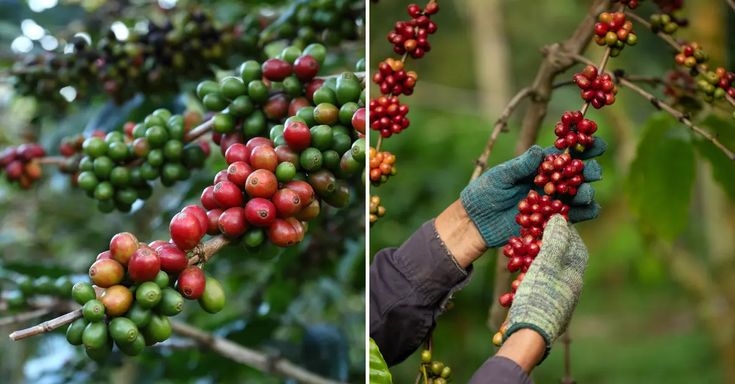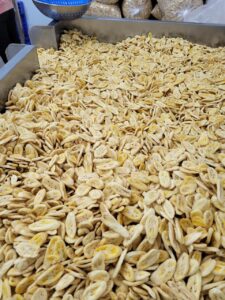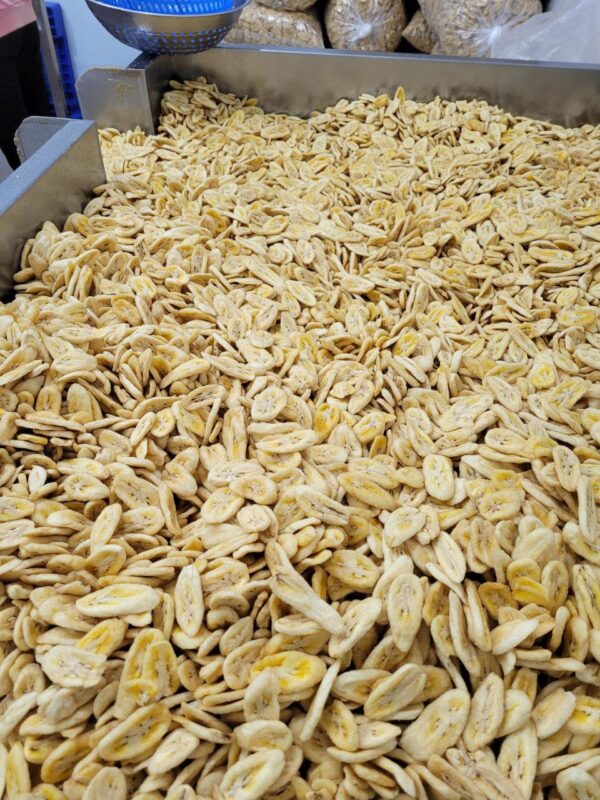Last updated on March 14th, 2025 at 06:22 am
Introduction
Vietnam, the world’s second-largest coffee exporter, has built a reputation for high-quality coffee, particularly Robusta and Arabica varieties. Whether you’re an avid coffee drinker or a business looking to source premium coffee beans, understanding the differences between Robusta and Arabica is key to making informed purchasing decisions.
In this detailed guide, we will dive into the flavor profiles, growing conditions, and production data for both coffee types, comparing them side-by-side to help you determine which is best suited to your needs.

1. Key Differences Between Robusta and Arabica Coffee
Flavor Profile Comparison:
One of the most distinguishing characteristics of Robusta and Arabica coffee is their flavor profile. Here’s a breakdown of how each variety tastes:
| Feature | Robusta Coffee | Arabica Coffee |
|---|---|---|
| Flavor | Strong, bitter, earthy, chocolatey, nutty | Smooth, mild, fruity, floral |
| Acidity | Low | High |
| Body | Full-bodied, thicker crema | Lighter body, smoother mouthfeel |
| Aftertaste | Strong, lingering bitterness | Clean, sweet aftertaste |
| Common Notes | Woody, earthy, spicy, nutty | Fruity, sweet, floral, sometimes berry-like |
- Robusta Coffee: This variety is known for its stronger, more bitter flavor and higher caffeine content, which can give a more intense flavor.
- Arabica Coffee: On the other hand, Arabica coffee is known for its smoothness and mild acidity, making it the preferred choice for specialty coffee.
Caffeine Content:
Robusta coffee contains almost twice as much caffeine as Arabica, contributing to its stronger flavor and more intense kick.
| Coffee Variety | Caffeine Content |
|---|---|
| Arabica | 1.2% – 1.5% |
| Robusta | 2.2% – 2.7% |
This makes Robusta a better choice for those who prefer a stronger, more energizing cup of coffee.
For more details on caffeine content in Vietnamese coffee, you can check out Arabica vs. Robusta Spray Dried Instant Coffee.

2. Growing Regions and Conditions
The growing conditions for Robusta and Arabica beans are vastly different, with each variety requiring specific climate and altitude conditions.
Arabica Coffee:
- Altitude: 600m to 2,000m above sea level
- Ideal Temperature: 18°C to 24°C
- Rainfall: 1,500mm to 2,000mm annually
- Growing Regions in Vietnam: Lam Dong, Dak Lak, and Gia Lai provinces, located in the Central Highlands of Vietnam.
Arabica requires cooler temperatures and more consistent rainfall to thrive. In Vietnam, Arabica production accounts for approximately 10-15% of the country’s total coffee production.
Robusta Coffee:
- Altitude: 200m to 800m above sea level
- Ideal Temperature: 24°C to 30°C
- Rainfall: 1,200mm to 2,000mm annually
- Growing Regions in Vietnam: Dak Nong, Binh Phuoc, Gia Lai, Kon Tum (Southern Vietnam).
Robusta coffee is more disease-resistant and can be grown in lower altitudes, making it more resilient to pests and adverse weather. In Vietnam, Robusta accounts for over 80% of the coffee produced.
3. Production Data: Vietnam’s Coffee Industry
Vietnam’s coffee industry is one of the largest in the world. According to the International Coffee Organization (ICO), Vietnam produces about 30 million 60-kg bags of coffee annually, with Robusta making up the majority of the production.
- Vietnam Robusta Production: 80% of total coffee production
- Vietnam Arabica Production: 20% of total coffee production
Vietnam’s coffee harvest season typically runs from October to March, during which Robusta beans are harvested in large quantities.
| Variety | Annual Production (approx.) | Percentage of Vietnam’s Total Coffee Production |
|---|---|---|
| Robusta | 24 million bags | 80% |
| Arabica | 6 million bags | 20% |
Robusta is grown in the South, while Arabica is more concentrated in the Central Highlands.
For more details on sourcing Vietnamese coffee, visit Key Factors in Sourcing Roasted Coffee from Vietnam.
4. The Role of Robusta and Arabica in Coffee Blends
Both Robusta and Arabica play key roles in the global coffee industry, especially in creating blends that appeal to various tastes. While Arabica is usually favored for specialty coffee, Robusta is often used in espresso blends due to its higher caffeine content and more robust flavor.
Robusta in Espresso Blends:
- Crema: Robusta beans create a thicker crema, which is essential for high-quality espresso.
- Caffeine Boost: The higher caffeine content in Robusta provides the extra punch desired by espresso drinkers.
Arabica in Specialty Coffees:
- Smoothness: The low acidity and sweet, fruity notes of Arabica make it ideal for specialty coffees and high-end blends.
- Flavor Variety: Arabica beans offer a wide range of flavors, including citrus, berry, and floral notes, making them the preferred choice for single-origin coffees.
5. Why Choose Vietnamese Roasted Coffee
Vietnamese coffee, whether Robusta or Arabica, is known for its high quality and affordability. The country’s favorable climate, skilled labor, and advanced processing techniques ensure that both varieties meet international standards for coffee production.
- Vietnam’s Coffee Export Data:
- Vietnam exports approximately 25 million bags of coffee each year.
- The export value of Vietnamese coffee was USD 3.3 billion in 2020.
For businesses sourcing Vietnamese roasted coffee, you can find reliable suppliers who offer high-quality, specialty coffee blends. For more on Vietnamese coffee blends, check out A Guide to Importing Vietnamese Roasted Coffee for Your Business.
FAQ Section
1. How does the caffeine content of Robusta and Arabica coffee compare?
Robusta contains approximately 2.7% caffeine, while Arabica contains around 1.5% caffeine.
2. Which variety of Vietnamese coffee is best for espresso?
Robusta is preferred for espresso blends due to its stronger flavor and ability to create a thicker crema.
3. Where in Vietnam is Arabica coffee grown?
Arabica coffee is grown primarily in the Central Highlands, including regions like Dak Lak and Lam Dong.
Conclusion
Choosing between Robusta and Arabica depends on your preferences and needs. Robusta offers a bold, full-bodied cup with higher caffeine content, ideal for espresso or those who prefer a stronger taste. Arabica, on the other hand, is preferred by those who enjoy a smoother, more complex coffee with fruity and floral notes.
For high-quality Vietnamese roasted coffee, whether Robusta or Arabica, contact Qualitex Global to source the best coffee beans for your business.









